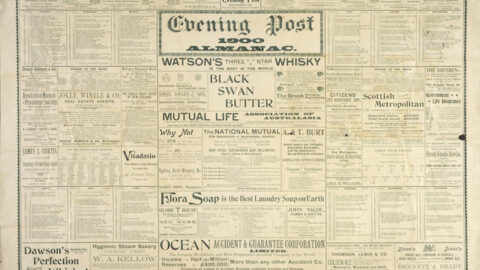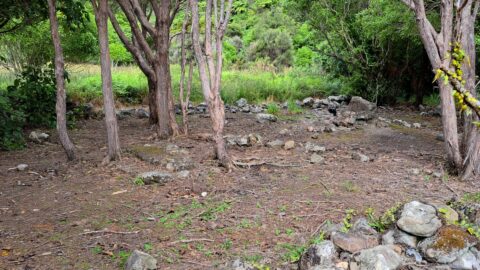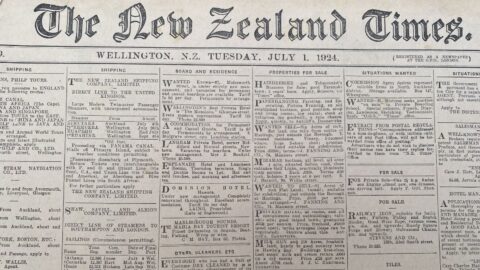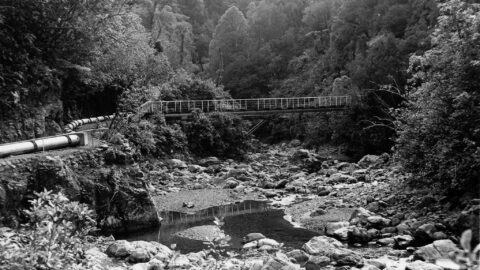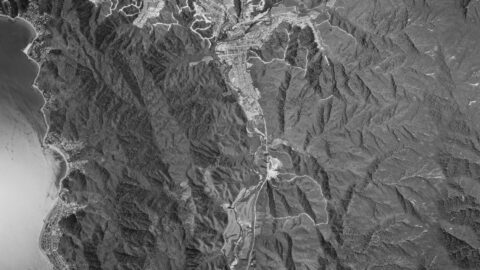The Wairarapa Railway
The ‘Gazette’ of 21st instant contains the following Report of an Exploration by Mr. John Rochfort, with a view to finding a practicable Railway Line to Wairarapa via Wainuiomata.
Wellington, 17 Jan 1871.
Sir, I have the honour to inform you that agreeably with your instructions, I called on Mr. Hugh Sinclair, for the purpose of examining a route to the Wairarapa discovered by his sons. Mr. John Sinclair at once offered to guide me through, and I have to thank them both for the way in which they furthered my object.
Commencing my description from the Hutt, this route crosses the dividing range at an elevation of 547 feet, and falls 314 feet to Mr. Sinclair’s house in the Wainuiomata. It then follows up the river about six miles and a half, rising 421 feet more. Here it ascends the range dividing the last-named river from the Orongorongo, an additional 751 feet. This is the lowest part of the range, and is 1,495 feet above the sea, or 1,242 feet above Mr. Sinclair’s house, and is the highest point of the route.
To gain this elevation with a gradient of 1 in 49 would require nine miles and a half of distance, whereas there are only six miles and a half. A line would therefore have to begin to ascend three miles below Mr. Sinclair’s house. I omitted to say that we ascended a hill about 2,220 feet high, from whence we could see all over the line, and ascertained that there was no lower place.
Mr. Sinclair’s route now follows down a branch of the Orongorongo in a southerly direction for about three miles, to its confluence with another stream which leads to the saddle dividing this river from the Wairongomai (N. 30O E and two miles distant). This pass is 365 feet below the other, or 1,130 feet above the sea, and might be easily reached from the Wainuiomata range by heading the first branch, and following the hills round gradually to the lower elevation.
At this point an unexpected difficulty occurs; the saddle of the Orongorongo, which rises very gently on its own side, terminates abruptly on the east side of the range; and instead of meeting the source of the Wairongomai River, it overlaps it, making a sudden drop of 900 feet, which there is no possible way of avoiding, as the side ranges are nearly perpendicular slips.
Mr. Sinclair said he had never seen this part of the range before, or he would not have put the Government to the expense of this exploration, and expressed himself quite satisfied that this route was impracticable. The sides of the Wairongomai are very rough and full of slips, and the distance down to the Lake from the saddle is about seven miles, and bears N. 43O E.
About two miles from the saddle, a branch comes in on the North side, up which the range is visible which separates the Pakuratahi; its bearing is about North. We returned round by the coast from the Wairarapa, and I have no hesitation in saying that in addition to the distance by the coast road being nearly double that of the Hutt line, a railway could not be made at any reasonable cost, because of the many slips which it would be impossible to avoid, and the small streams which push forward immense shingle fans into the surf.
These two questions may now fairly be considered as being set at rest; and I feel assured that the line I have chosen over the Rimutaka is the best that will be found. I append a few altitudes of Mr. Sinclair’s line:
Altitudes taken by Aneroid along Mr Sinclair’s route.
A. Summit level between Hutt and Wainuiomata: 567 feet above the sea
B. Mr Sinclair’s house: 253 And Six miles and a half up Wainuimata: 744
C. Summit level between Wainuiomata and the Orongorongo: 1,495
D. Confluence of the two branches of Orongorongo: 976
E. Watershed between Orongorongo and Wairongomai: 1,130; Junction of first stream flowing into Wairongomai: 250; Junction of second stream flowing into Wairongomai: 205.

